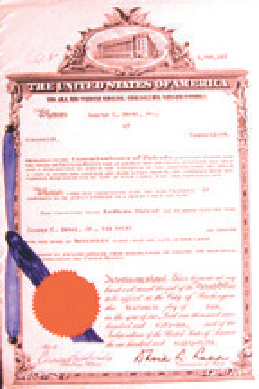Information Technology Reference
In-Depth Information
for specifying the desired behavior of a computer program and proving that the
resulting code actually fulfills these specifications. Today, such methods work
only for small-scale systems, and there is still much research needed to scale
these methods up to handle the large, critical safety applications of tomorrow.
In this chapter we will look at two key trends - the coming robotics revolu-
tion and the “Internet of Things” - and end the chapter with some words about
consciousness and realistic neural networks.
The rise of the robots
The word
robot
was introduced to the world by the Czech author Karel
Čapek in his play
R.U.R.
, an abbreviation for Rossum's Universal Robots. The
play, first performed in 1921, portrayed mass-produced artificial humans that
could manufacture products much more cheaply than real people could. The
word
robot
is derived from the Czech word
robota
, meaning
labor
. The theme of
R.U.R.
is now a familiar one in science fiction, a revolt by the robots. Another
science fiction writer, Isaac Asimov, introduced the word
robotics
to mean
the science and technology of robots. Robotics is now an established field
of research and requires a combination of many different disciplines, rang-
ing from mechanical engineering and power systems to computer vision and
machine learning.
The first industrial robot was a far cry from the humanoid robots imag-
ined by Čapek and Asimov. In 1954, George Devol (
B.16.1
) invented a static,
immobile machine with a programmable arm. His patent on a device for “pro-
grammed article transfer” issued in 1961 laid the foundation for the modern
robotics industry (
Fig. 16.1
). In his patent application he wrote, “The present
invention makes available for the first time a more or less general purpose
machine that has universal application to a vast diversity of applications where
cyclic digital control is desired.”
4
Devol coined the phrase
universal automation
to describe a robot that could
be programmed to perform a variety of tasks, and he called his first product
the Unimate. The first Unimate machine was sold to General Motors in 1960.
General Motors installed it at the auto-body plant in Ewing Township, New
Jersey, to lift and stack hot pieces of metal from a die-casting machine. Devol's
next product was a robotic arm for spot welding. The early industrial robots did
not look anything like the humanoid robots of science fiction; many consisted
of little more than a mechanical arm. Other automobile companies soon fol-
lowed General Motors's lead, using robots to do jobs that were tedious, hard,
or dangerous for people.
Around twenty thousand robots are now sold each year in North America.
Although the U.S. automotive industry is still the dominant sector, sales also
grew in the life sciences and pharmaceutical industry. Japan leads the world
with an installed base of several hundred thousand industrial robots. These
modern industrial robots are far more sophisticated than their early ancestors.
On the new Tesla electric car assembly line in California, for example, at each
station there are up to eight robots, some more than eight feet tall, each with
a single arm with multiple joints, and each capable of multiple functions, such
as welding, riveting, and bonding different components (see
Fig. 16.2
). Since
Fig. 16.1. George Devol's original patent
for the first programmable robotic arm
in 1954 was the foundation for the mod-
ern robotics industry.
B.16.1. George Devol (1912-2011)
was the inventor of robotic arm. This
programmable device became very
successful and revolutionized the
manufacturing industry.


Search WWH ::

Custom Search